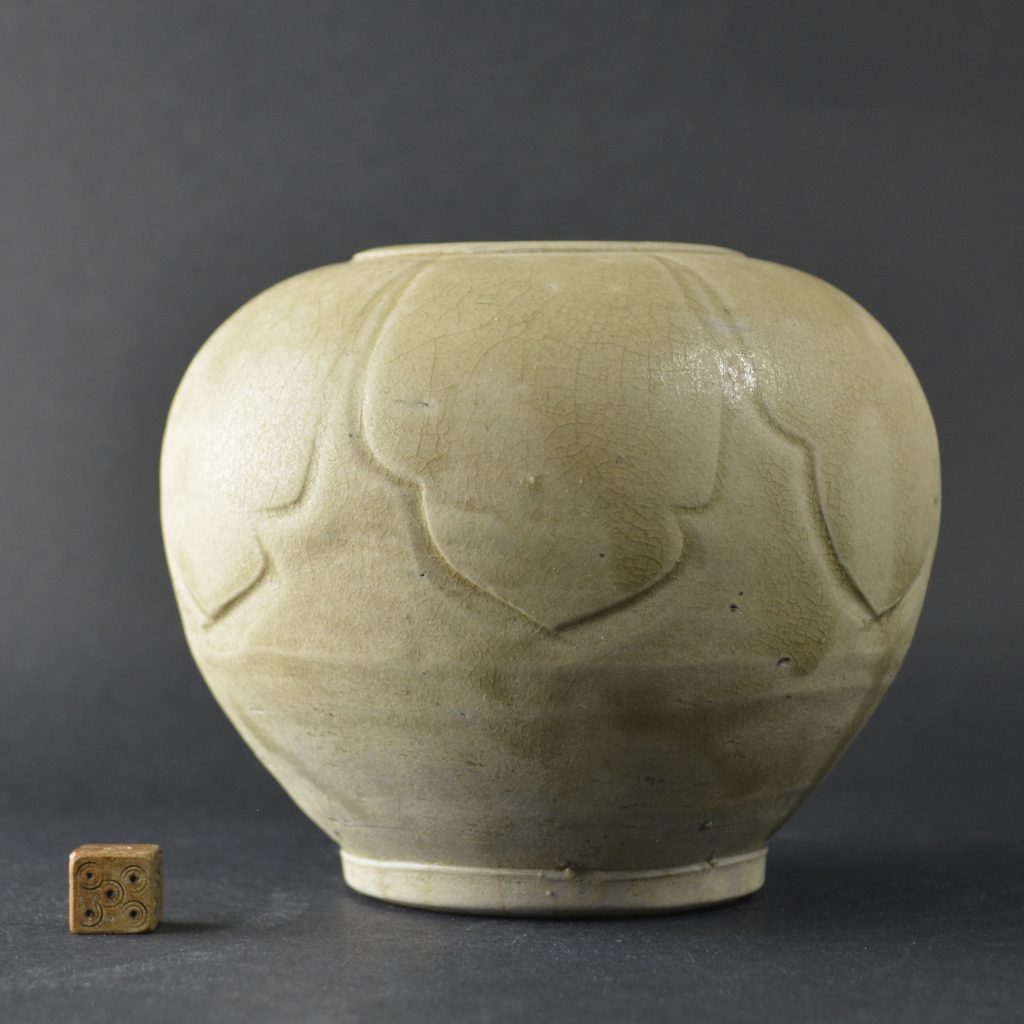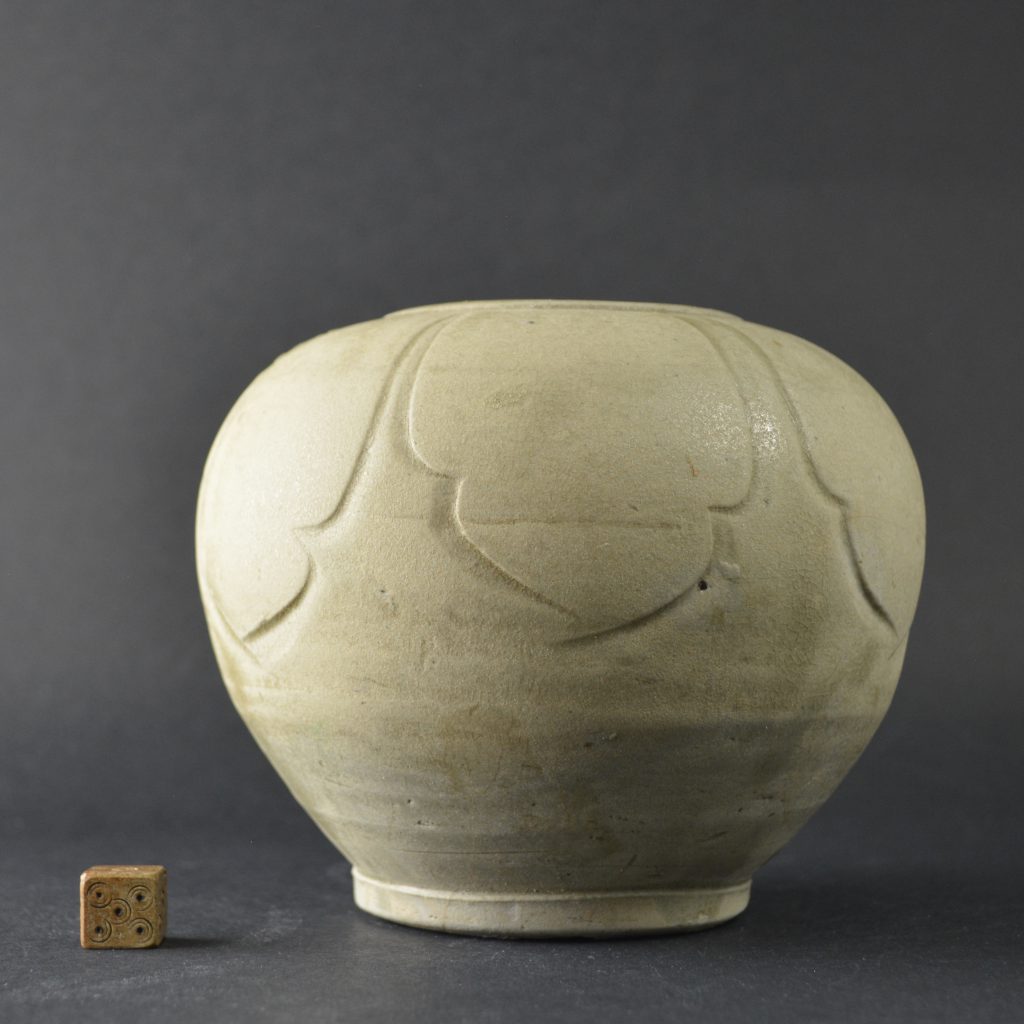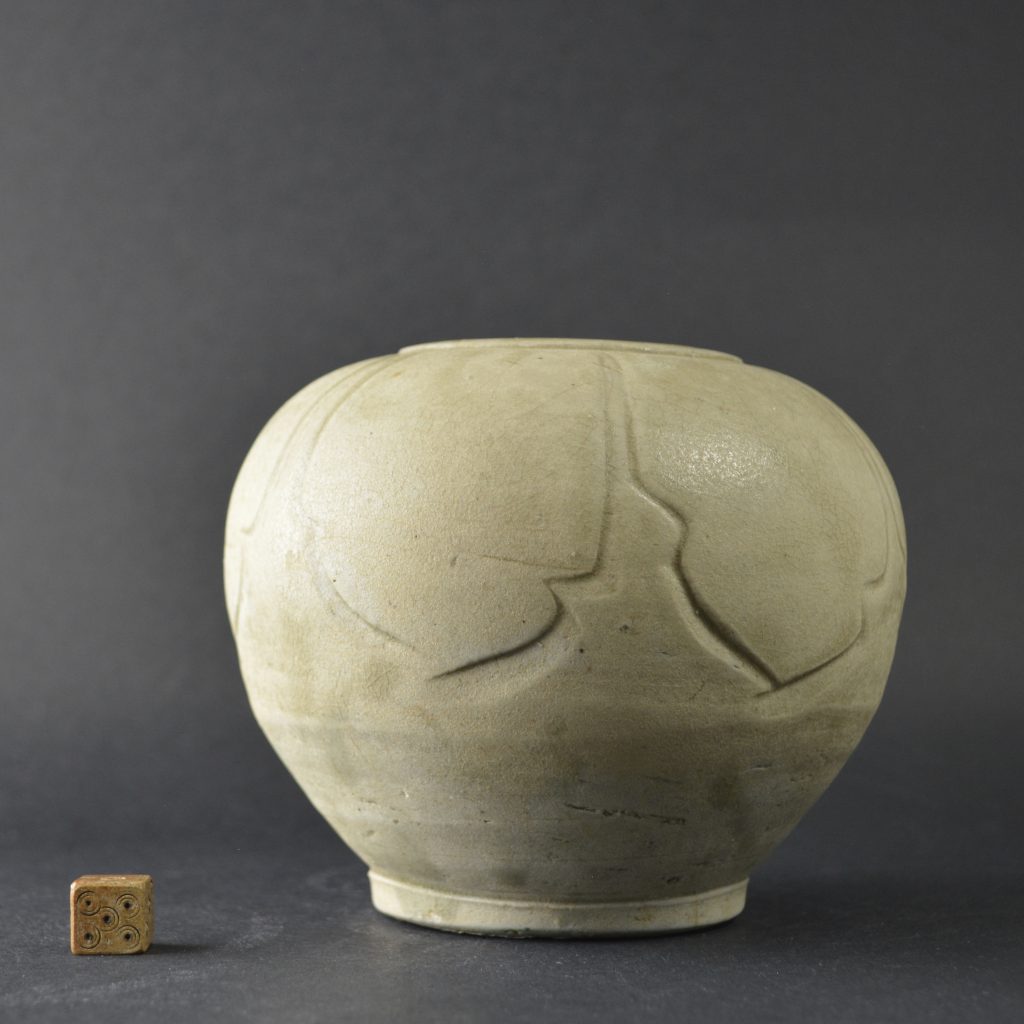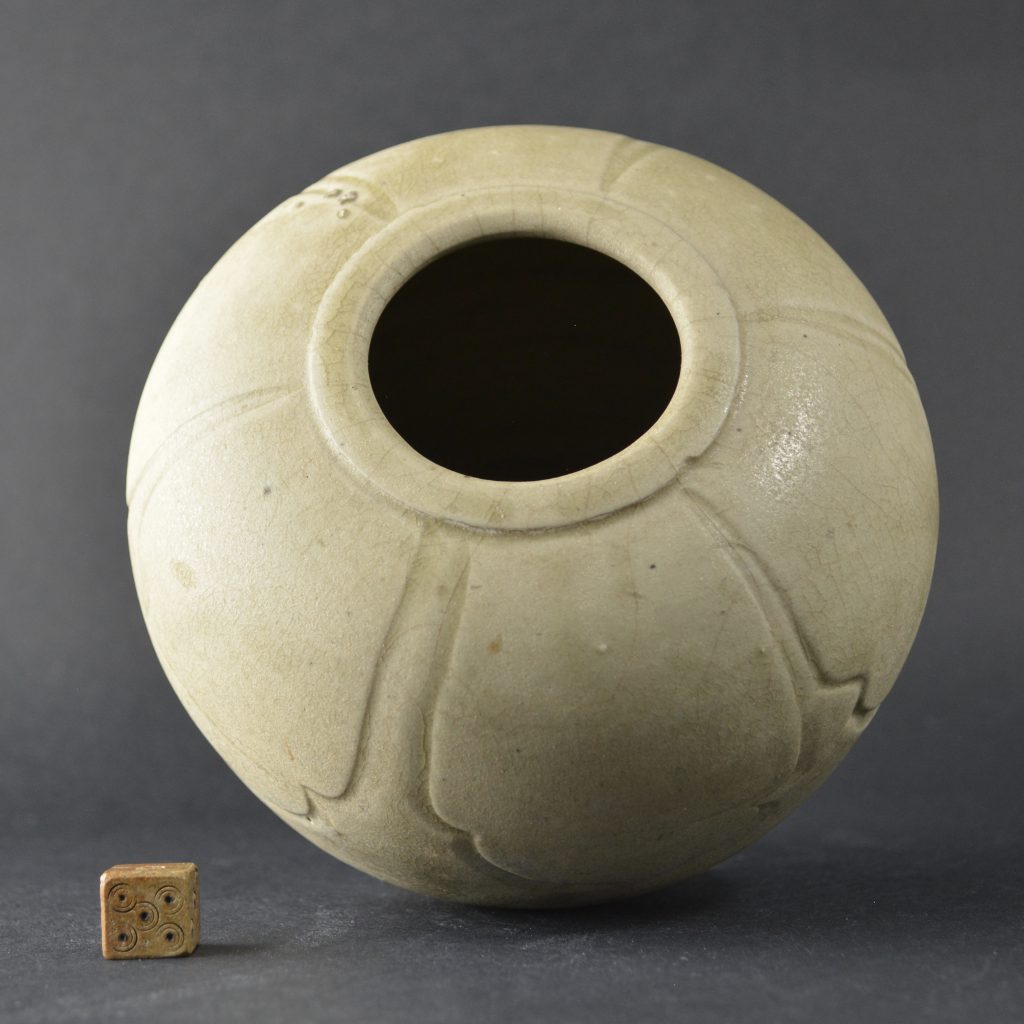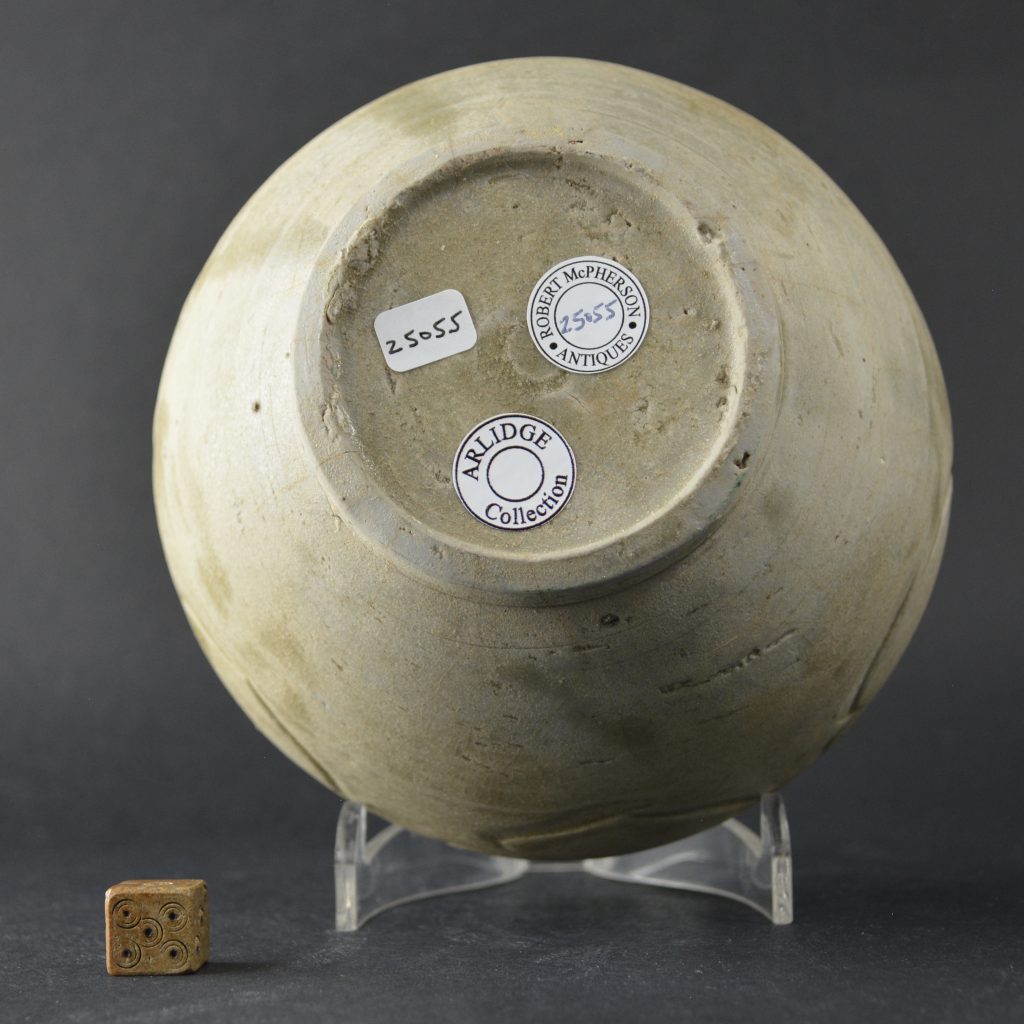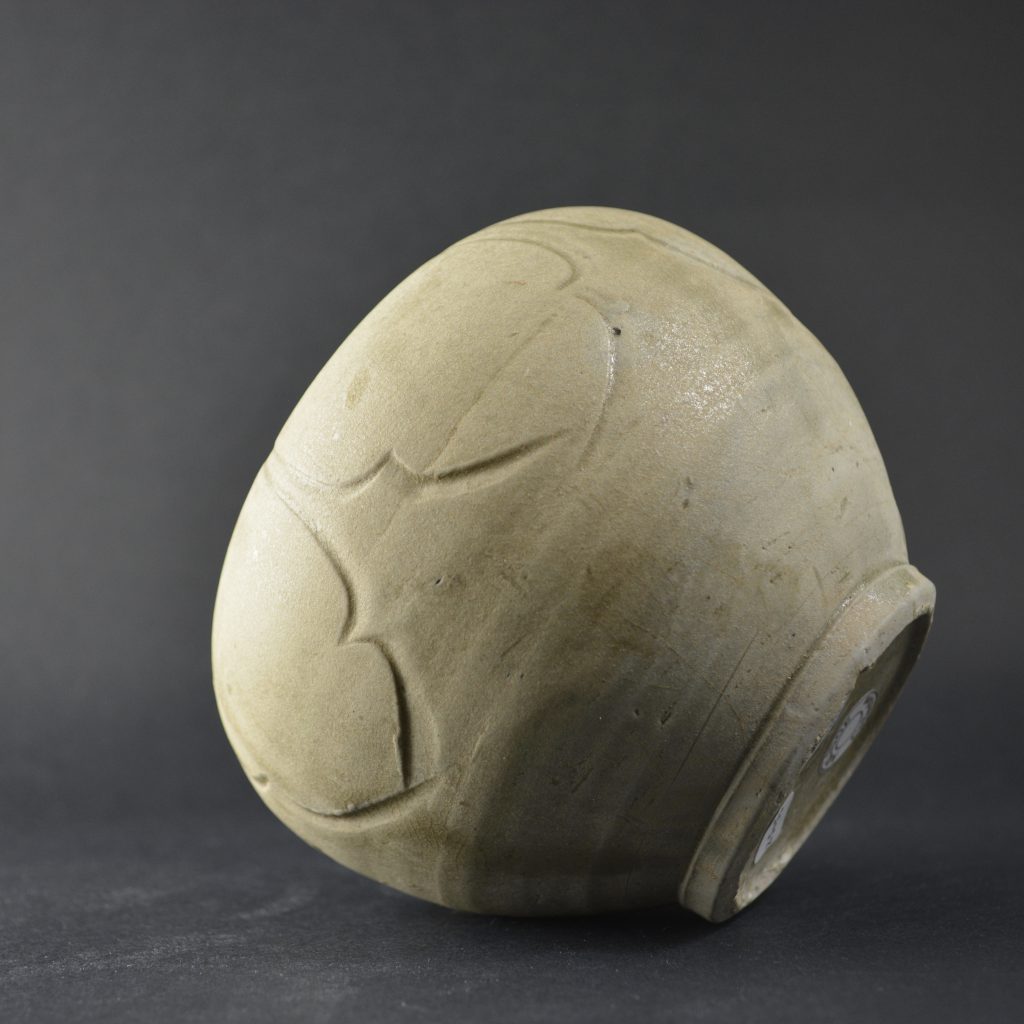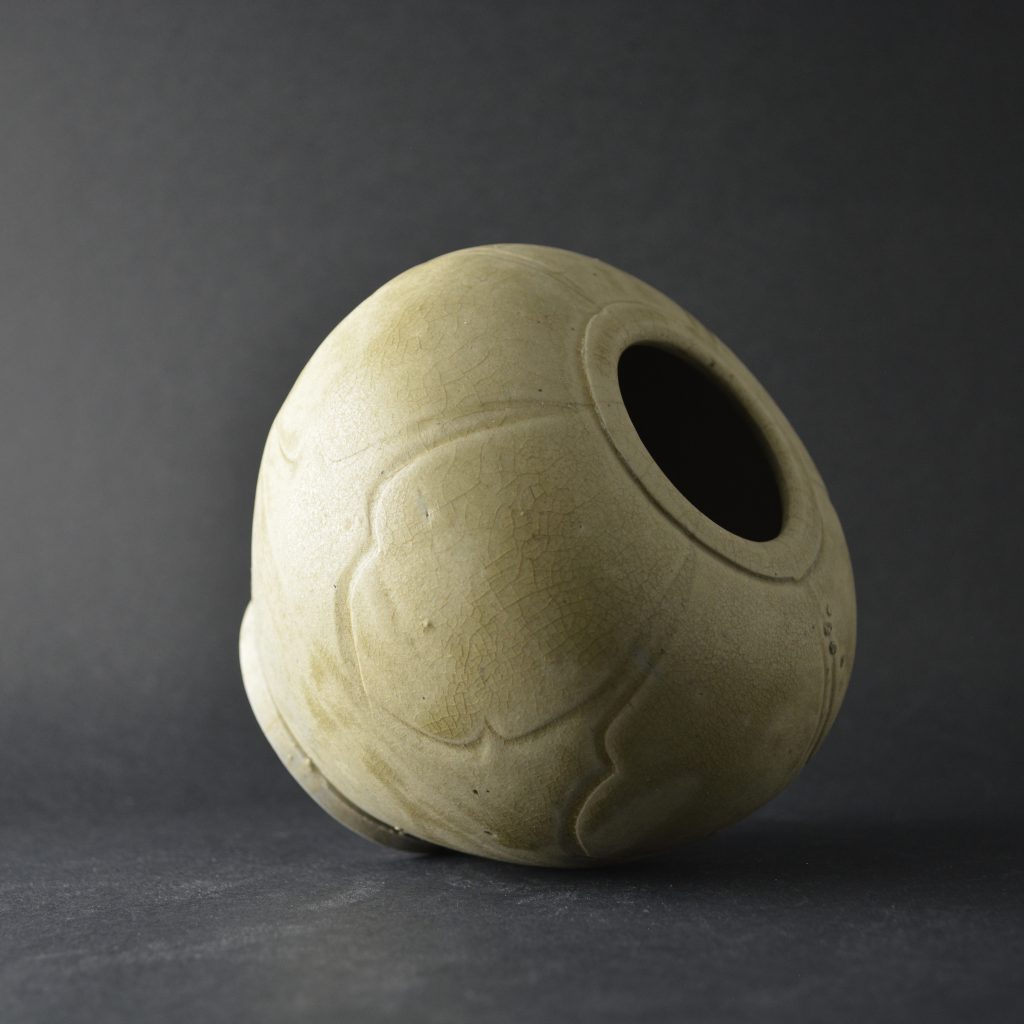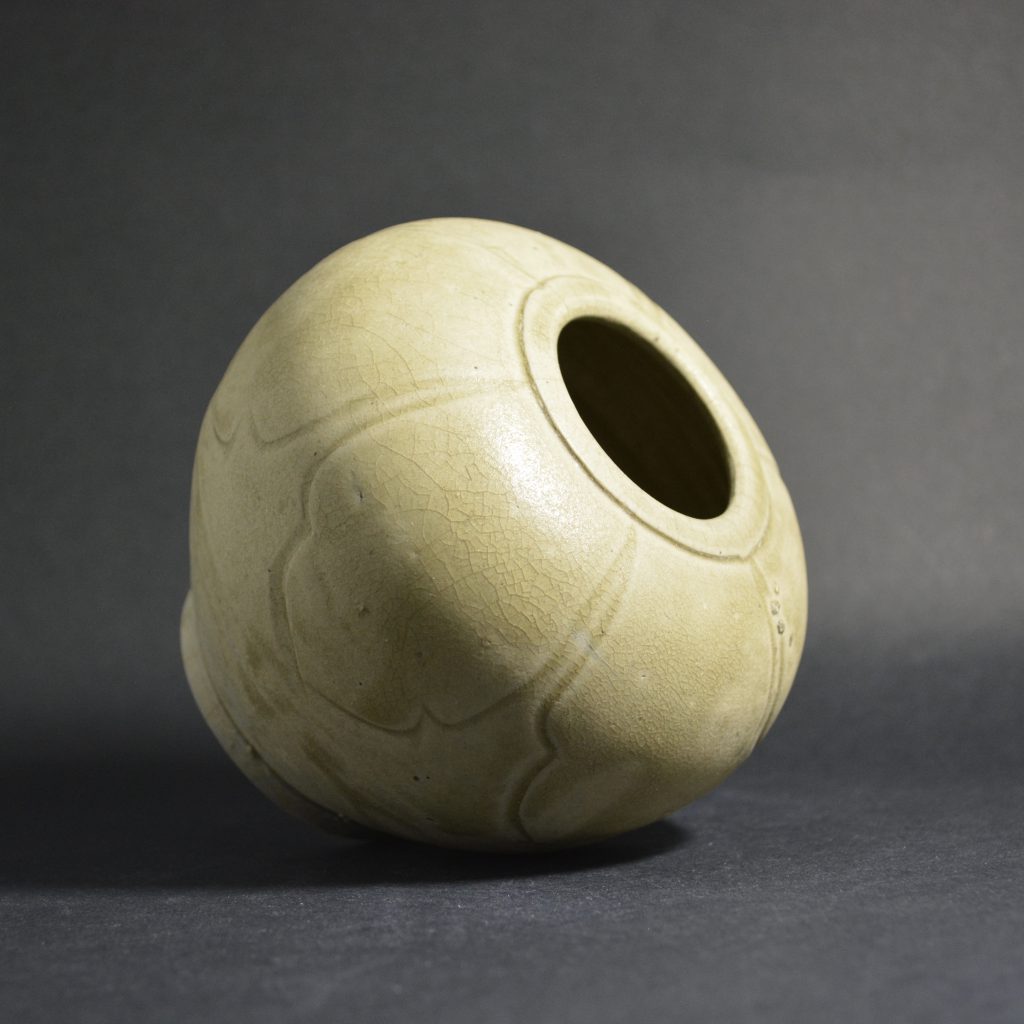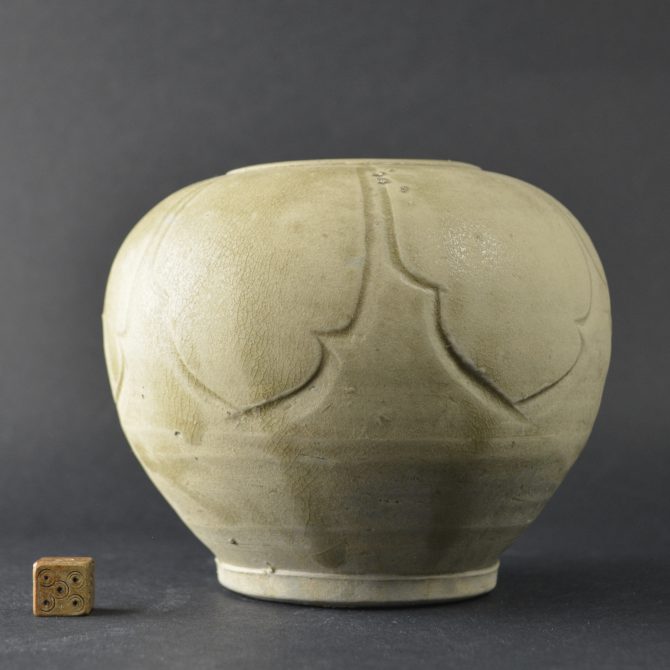
A 10th Century Yue Celadon Glazed Stoneware Jar.
A 10th Century Yue Celadon Ware Jar, Five Dynasties 907-960 or Northern Song 960-1127. The small globular shaped jar is made from a putty coloured clay has a translucent yellow tinged celadon glaze which has left dipping marks down the sides of the pot. Prior to glazing this Yue Celadon jar was swiftly carved with a lotus band around the upper register.
SOLD
- Condition
- In good condition, some wear to the glaze. Crazing and some minor stress cracks to the footrim leading into the body and the neck.
- Size
- Height 10.3 cm (4 1/8 inches).
- Provenance
- The Peter Arlidge Collection of Song Ceramics.
- Stock number
- 25055
Information
Chinese Celadon Wares :
Celadon is a term used to describe several types of Chinese stoneware and porcelain, as well a ceramics from other countries, notably from Korea and Japan. The term is a vague one, applying to various types of green glazed ceramics, but not all ceramics with green glazes, there are several wares that have a green glaze that are not refereed to as celadon. For example Green Jun and Ge Ware. For this reason there has been a move to try to clarify the situation by using the term ‘Green Ware’. But for now Celadon is a more familiar and therefore useful term. The origins of the term Celadon are not clear, one theory is that the term first appeared in France in the 17th century and that it is named after the shepherd Celadon in Honoré d’Urfé’s French pastoral romance, L’Astrée (1627), who wore pale green ribbons. (D’Urfe, in turn, borrowed his character from Ovid’s Metamorphoses.) Another theory is that the term is a corruption of the name of Saladin, the Ayyubid Sultan, who in 1171 sent forty pieces of the ceramic to Nur ad-Din, Sultan of Syria. Yet a third theory is that the word derives from the Sanskrit sila and dhara, which mean “stone” and “green” respectively.
Some of the earliest high-fired glazed Chinese ceramics date from the early Shang period, 14th century B.C. The Yuanqi site in south Shanxi province in Northern China was discovered in the 1980’s, among the ordinary Shang wares were a few shards of tough, high-fired thin ceramics with a green ash-glaze. These can be seen as the first stage in the development towards a true celadon glaze, other developments were to include the sprinkled ash-glazes of the Proto-Porcelain produced during the Western Han period of the 2nd and 1st centuries B.C.
